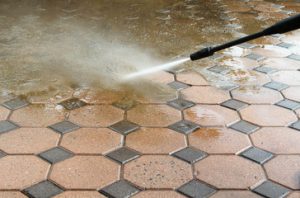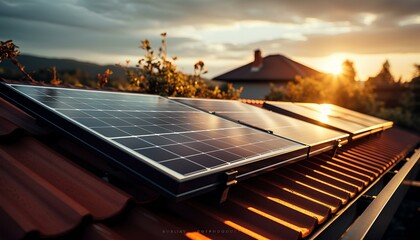Pressure Washing Summerville SC is a fast and efficient way to dislodge mildew, mold, dirt and grime from the exterior surfaces of your home. However, there are several things to keep in mind when using a pressure washer.

Proper PSI and water rotation, as well as the right cleaning products, are essential to avoid damage to surfaces like wood, vinyl and brick.
Pressure Washing is a widely recognized cleaning method for eliminating dirt, grime, mildew, mold and more from various surfaces. The combination of high-pressure water and specialized cleaners effectively cleans and refreshes exterior surfaces, including sidewalks, driveways, walls, and other areas in commercial and residential settings. This helps improve outdoor hygiene, creating a healthier and more appealing environment while protecting surfaces from surface deterioration.
A pressure washer machine generates a powerful stream of water through the use of a water pump that uses gas or electricity and is connected to a nozzle which controls the application of the spray. Different nozzles are available, including turbo nozzles that rotate and create a broader overall spray when further away from the surface and a finer point when closer. These variations help prevent concentrating too much pressure in one spot which could cause damage.
Using the right nozzle and selecting the correct cleaners are key for a successful cleaning job. A professional will carefully inspect the property to determine the appropriate PSI and water flow for each area of the structure to remove built-up grime and stains without causing damage. They will also ensure that all hose connections are securely attached and that the nozzles are positioned correctly to avoid damaging areas that should remain unwashed.
It is important to work on a calm, dry day when performing a pressure washing job. This will allow the cleaned surfaces to dry quickly and will minimize the chance of any damages occurring to freshly washed areas. It is best to work from the top down on vertical surfaces like siding and fences and move in overlapping sections when working on decks, patios and driveways. Also, be sure to wear sturdy shoes and clothing as well as gloves to protect yourself from the force of the water.
Performing regular cleanings with a pressure washer can dramatically improve the look of homes and businesses. A properly maintained building with fresh siding and walkways creates a positive first impression and increases property value. This is especially true for commercial properties, which can benefit from an improved visual aesthetic while promoting a professional image and attracting customers.
Stains Removal
Whether they’re caused by oil leaks from automobiles, chemicals from fertilizers or pesticides, or just time and age, stains on asphalt surfaces like driveways and parking lots are unsightly and can degrade the surface over time. Using the right equipment for stain removal can save these surfaces and prevent costly repairs in the future.
The forceful water blast from a pressure washer releases kinetic energy that breaks the bonds between surfaces and unwanted substances, making them easier to remove. The high-pressure water volume also creates turbulence that further assists in the removal of dirt and debris. When using a pressure washing machine, it’s important to follow manufacturer guidelines and use the appropriate water temperature for your specific surface.
Cleaning solutions formulated for specific surfaces also make the cleaning process faster and more effective. For instance, a multipurpose cleaner that’s formulated for concrete can help speed up the removal of mildew, while a grease-cutting solution helps break down and dissolve grease stains.
Grease stains are one of the most difficult stains to remove from concrete, interlocking pavers, natural stone and other hardscapes surfaces. The longer you wait to remove these stains, the harder they will be to dislodge and the more permanent they’ll become. If you notice a grease stain, it’s best to act quickly.
A professional pressure washing service uses a combination of cleaning solutions and a high-powered pressure washer to remove these unsightly stains from the concrete on your home or business. Oftentimes, the concrete will need a second treatment with a degreasing product to ensure all traces of grease are removed. This step is followed by a thorough rinsing.
While it is possible for DIY homeowners to rent a pressure washer and try to tackle their own stain removal, doing so can lead to expensive property damage if not done correctly. The risk of injury or damage is also high if the homeowner has no experience working with the tool. Professionals have the knowledge and experience to safely operate a pressure washer while following proper procedures for each type of surface. They’ll also have access to a variety of tools and cleaning products that are safe for different types of surfaces, including those requiring a high-pressure wash.
Preventative Maintenance
Pressure washing can be an effective preventative maintenance strategy, reducing the need for expensive repairs and increasing the longevity of surfaces. Dirt, grime, mildew, and other contaminants build up on exterior surfaces over time, leading to deterioration and reduced visual appeal. These materials can also clog or damage structures and cause health issues. Regular cleaning with a power washer removes these substances before they have a chance to damage the surface and reduce the lifespan of the material.
A clean exterior improves curb appeal and can boost a property’s value. It also helps prevent mold and mildew growth, which can eat away at surfaces and increase the need for costly repairs. Keeping your exteriors free of these contaminants can also help lower energy costs, as a cleaner roof can reflect sunlight more effectively and help regulate indoor temperature.
Properly using a power washer can be tricky, as high temperatures and high-pressure water can damage some surfaces if not used correctly. A professional service knows exactly how much water pressure to use on various surfaces and can adjust the nozzle and spray pattern to avoid damaging the structure. They can also advise on suitable detergents and cleaning solutions to help achieve optimal results without damaging the surface.
It is important to test the pressure and spray pattern of your pressure washer on a small area before starting a project, and always work from the top of the surface down to avoid streaking. Choosing the right nozzle can also make a significant difference, with wide-angle nozzles suitable for general cleaning and smaller nozzles better suited for tight spaces or for targeting specific stains. A turbo nozzle that rotates to create a broader spray when further away from the surface and a finer point when closer can also be an effective way of navigating changing conditions on a job.
It is also important to drain and replace your gasoline after each use, as stale fuel can clog the carburetor and negatively impact performance. In addition, never turn off a gas-powered pressure washer before cooling it down completely. This can prevent the hot engine from overheating and damaging the pressure washer or other equipment.
Restoring Appearance
The powerful water blasts of pressure washing make quick work of accumulated dirt, mildew and stains that are difficult to remove with manual scrubbing or brushing. In the hands of a professional technician, this technique is used to clean exterior surfaces such as roofs, siding, driveways and walkways without damaging them or causing unnecessary wear. Pressure washing can also revitalize fences, decks and outdoor furniture by removing weathered coatings and restoring their original luster.
The improved aesthetic appearance resulting from the thorough cleaning of surfaces can drastically increase a home’s curb appeal and raise its financial value as compared to homes that have been neglected. Prospective buyers will gravitate towards houses that look well maintained and free from environmental hazards like mold and mildew build-up. Regular maintenance via pressure washing will also prevent further deterioration and reduce the need for costly repairs down the road.
Incorporating pressure washing into restoration projects helps to prepare surfaces for treatments and repair work while revealing any underlying issues that may need to be addressed. Since the humid subtropical climate in Houston can accelerate the deterioration of surface materials, periodic cleaning is essential to preserve the structural integrity of buildings and extend their lifespans.
Using the right nozzle sizes and settings is key to preserving paint finishes and avoiding damage caused by excessive force. Proper usage techniques also help to minimize risk of potential damage to delicate surfaces such as window frames and trim pieces. By carefully choosing the correct nozzle and pressure level for each surface, professional technicians can ensure that surfaces are cleaned thoroughly and evenly without causing any unnecessary damage or wear.
In addition to boosting curb appeal, regularly cleaning the exterior of a house can also save money on energy costs. The bright and reflective properties of clean surfaces, particularly those of light-colored siding or roofing, can significantly lower cooling requirements in the warm summer months. Regular cleanings can also help to discourage insect infestations by eliminating breeding habitats and reducing the amount of organic growth that accumulates around structures.
